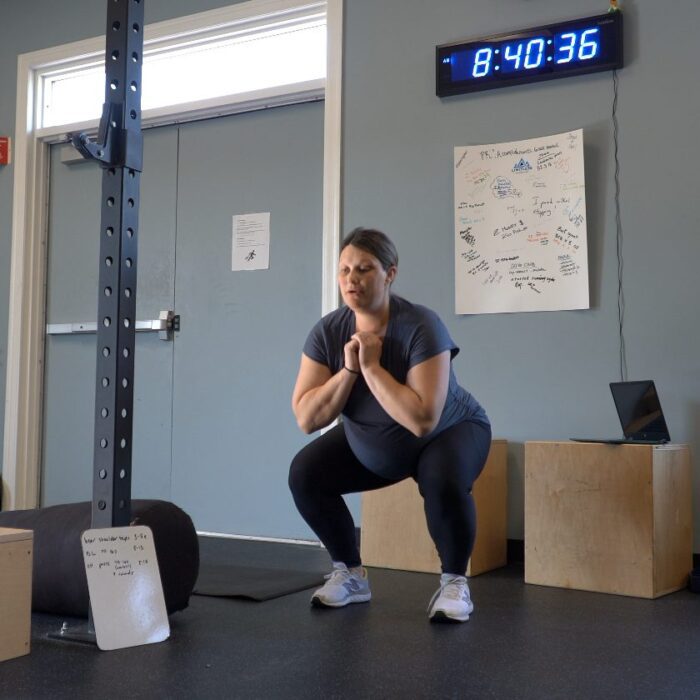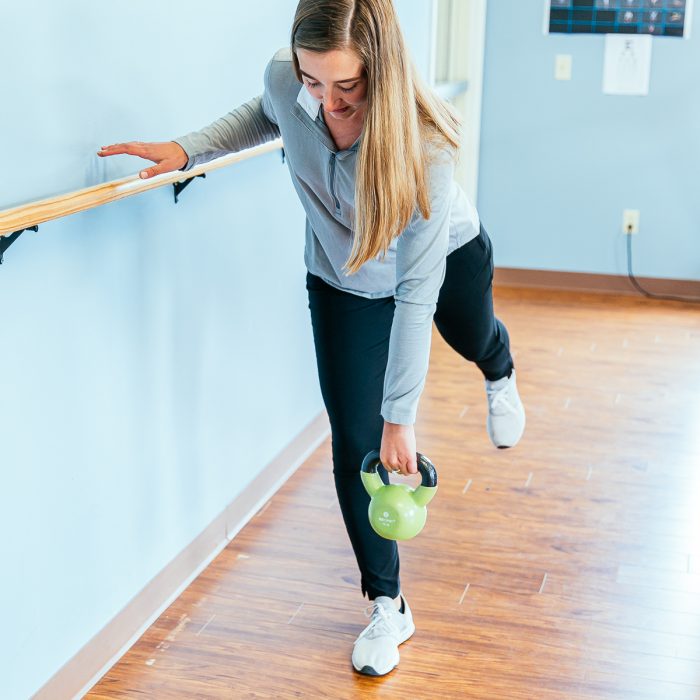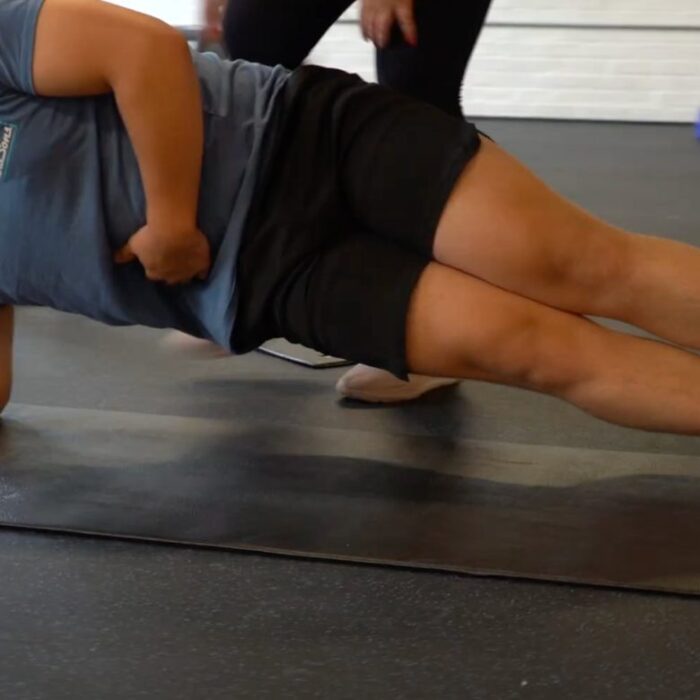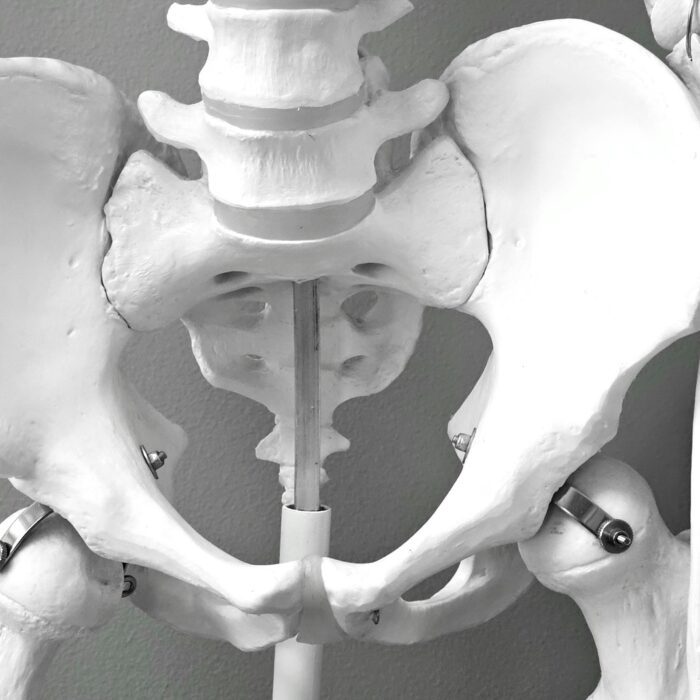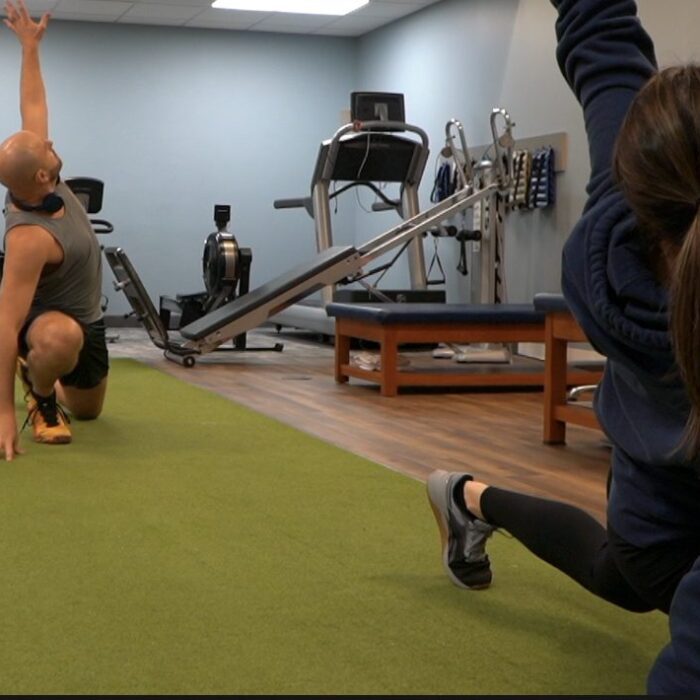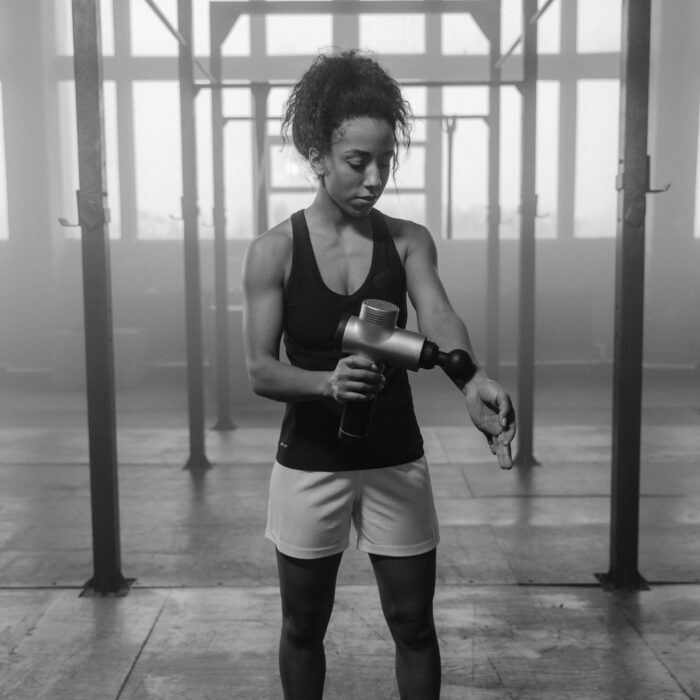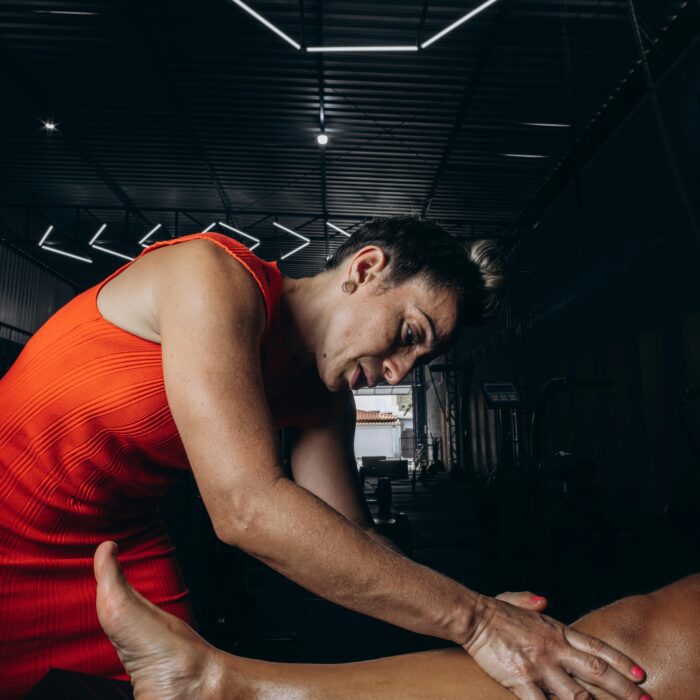Training harder isn’t always the answer to better results. Many athletes plateau not because of effort, but because of hidden limitations in mobility, movement patterns, or neuromuscular control. Sports performance physical therapy (PT) bridges that gap — combining clinical precision with athletic training to help you move efficiently, perform better, and prevent injury before it starts.
At Limitless Physical Therapy, we specialize in helping athletes across the Rochester area identify what’s holding them back and unlock performance that training alone can’t achieve.
What Is Sports Performance Physical Therapy?
Sports performance physical therapy applies movement science, biomechanics, and human performance research to help healthy athletes reach their potential.
Unlike traditional rehab, which responds to injury, performance PT works proactively — identifying subtle inefficiencies, correcting limitations, and enhancing physical output.
Core Components of Performance PT:
- Comprehensive Movement Analysis: Evaluating mobility, strength balance, and coordination to find inefficiencies invisible to the naked eye.
- Evidence-Based Interventions: Using research-backed corrective exercises, neuromuscular training, and manual therapy to target limitations.
- Biomechanical Optimization: Refining how your body produces and transfers force for maximum efficiency and power.
- Injury Prevention: Addressing risk factors before they cause problems, keeping athletes healthy and progressing.
- Performance Enhancement: Applying validated methods like plyometrics and eccentric training to improve speed, agility, and strength.
With over 15 years of experience and more than 5,000 athletes treated, Limitless PT has seen a consistent pattern — most athletes have significant untapped potential that can be unlocked through targeted optimization.
Performance Optimization vs. Rehabilitation
Rehabilitation PT and performance PT use many of the same tools — but for different purposes.
| Focus | Rehabilitation PT | Performance PT |
| Goal | Heal injury, reduce pain, restore basic function | Improve performance, efficiency, and power |
| Timing | After injury or surgery | Year-round, pre-season, or off-season |
| Metrics | Pain reduction, range of motion, daily function | Power output, strength symmetry, movement efficiency |
| Population | Injured or recovering athletes | Healthy, training, or plateaued athletes |
Performance PT asks a different question:
“How can we make your body perform at its absolute best?”
Who Benefits from Sports Performance Physical Therapy
Performance PT is not just for professionals. It’s designed for anyone serious about improving athletic outcomes.
1. Competitive Athletes
High school, collegiate, and masters-level athletes use performance PT to sharpen movement efficiency and build competitive advantage.
2. Plateaued Athletes
When progress stalls despite consistent training, performance PT identifies underlying restrictions — often mobility or movement deficits — that block further improvement.
3. Injury-Prone Athletes
Recurrent issues like ankle sprains or hamstring strains often stem from asymmetries or poor control. Correcting these can cut future injury risk dramatically.
4. Athletes Returning from Injury
Even after rehab, small deficits may persist. Performance PT ensures full restoration of strength and coordination to prevent re-injury and restore confidence.
5. Committed Recreational Athletes
From marathoners to CrossFit competitors, recreational athletes use performance PT to fine-tune efficiency, boost results, and extend longevity in their sport.
6. High-Risk Sports Participants
Sports involving cutting, jumping, or overhead movements (soccer, basketball, volleyball, baseball) benefit from biomechanical optimization that reduces ACL, shoulder, and ankle injuries.
The Science of Sports Performance Physical Therapy
Biomechanical Analysis and Movement Optimization
Your body functions as a connected chain — force generated in one segment transfers through the next. Restrictions in any link reduce total output.
Performance PT analyzes how efficiently your body moves and where energy leaks occur. Assessments may include:
- Joint mobility testing to identify movement restrictions.
- Functional movement screening to detect faulty patterns.
- Force production and transfer analysis using jump or sprint metrics.
- Neuromuscular control testing to assess timing, coordination, and sequencing.
By optimizing these systems, performance PT helps athletes move more efficiently, generate more power, and lower injury risk.
Evidence-Based Training Methods
Every performance protocol at Limitless PT is grounded in scientific research — not trends.
Plyometric Training
Properly progressed plyometric programs improve vertical jump, sprint speed, and reactive agility by enhancing neuromuscular coordination and power.
Eccentric Training
Eccentric strength work (lengthening under load) builds resilience and explosiveness. It’s especially effective for hamstring strength and injury prevention.
Neuromuscular Training
Improves movement control, balance, and coordination. Research shows ACL injury prevention programs using neuromuscular methods can reduce knee injuries by up to 70%.
Asymmetry Reduction
Testing reveals if one limb is weaker or less stable. Addressing these imbalances boosts performance and dramatically reduces injury risk.
Movement Pattern Training
Reinforces proper mechanics in squatting, hinging, landing, and sport-specific actions to eliminate inefficiencies and maximize output.
The Role of Neuromuscular Efficiency
Athletic performance depends on how effectively your nervous system activates and coordinates muscle groups. Many athletes are strong but inefficient — their timing and coordination limit performance.
Key elements include:
- Timing and sequencing: Correct order of activation for power transfer.
- Rate of force development: How quickly strength is applied.
- Reactive strength: Ability to absorb and reapply force quickly (e.g., jump landings, sprints).
- Movement economy: Producing force efficiently with minimal energy waste.
- Bilateral coordination: Balanced movement between left and right sides.
Performance PT improves these factors through precision drills, reactive training, and neuromuscular re-education.
Identifying Hidden Limitations
Many athletes train around deficits without realizing it. Performance PT reveals and corrects these invisible barriers.
Common limitations include:
- Restricted joint mobility (hips, ankles, shoulders)
- Side-to-side strength asymmetries
- Faulty movement patterns (valgus knees, limited hip hinge)
- Delayed muscle activation or poor timing
- Asymmetrical loading or gait imbalances
These issues waste energy and increase the likelihood of plateau or injury. Correcting them leads to immediate performance improvements.
Correcting Biomechanical Inefficiencies
Once problems are identified, performance PT applies targeted interventions:
- Manual therapy to restore mobility and reduce restrictions.
- Corrective exercises to strengthen weak or underused muscles.
- Progressive loading to rebuild power with proper mechanics.
- Sport-specific integration to apply improved movement to real performance.
- Plyometric and agility training to refine explosive capabilities.
This systematic process ensures gains translate directly to your sport.
Enhancing Power, Speed, and Agility
Power
Performance PT increases power by addressing mobility restrictions, improving mechanics, and developing the stretch-shortening cycle through plyometrics and Olympic lift progressions.
Speed
Improved stride mechanics, hip and ankle mobility, and core control directly translate to faster acceleration and sprint performance.
Agility
Through deceleration drills, landing training, and reactive exercises, performance PT improves change-of-direction speed while reducing injury risk.
Common Performance Barriers
1. Mobility Restrictions
Limitations in hip, ankle, thoracic spine, or shoulder mobility affect every athletic movement. Improving mobility improves efficiency, depth, and output.
2. Strength Imbalances
Uneven limb or muscle group strength leads to compensations and reduced performance. Performance PT restores balance and proper muscle sequencing.
3. Core Weakness
A weak or poorly coordinated core limits power transfer between upper and lower body. Strengthening and retraining the core increases stability and total-body performance.
4. Faulty Movement Patterns
Poor squatting, landing, or running mechanics waste energy and heighten injury risk. Retraining these foundational movements yields measurable gains in efficiency and safety.
Advanced Assessment Tools
Limitless PT uses both clinical observation and advanced technology to quantify performance:
- Functional Movement Screen (FMS) – Evaluates seven key movement patterns to identify asymmetries and risk factors.
- Y-Balance Test – Assesses dynamic stability and limb reach distance.
- Hop Testing – Measures single-leg power and symmetry.
- Force Plate & Motion Analysis – Tracks landing forces, jump mechanics, and gait patterns.
- Wearable Sensors – Capture training load and movement data for real-world analysis.
These tools provide objective benchmarks to guide training and measure progress.
When to Use Performance Physical Therapy
Off-Season Optimization
The best time for performance PT is the off-season — when training volume can shift toward movement quality and correction.
Benefits include:
- Time to fix inefficiencies before competition
- Injury risk reduction through proactive training
- Foundation building for the next season
Breaking Through Plateaus
If your progress has stalled despite consistent work, performance PT can reveal the physical or neurological constraints preventing improvement.
Pre-Season and Pre-Competition
Before major events, performance PT ensures mechanics are refined, movement patterns are efficient, and no residual issues remain from prior training.
Sports Performance PT vs. Coaching and Training
Performance PT complements — not replaces — your training and coaching.
| Role | Focus | Outcome |
| Performance PT | Movement quality, biomechanics, injury prevention | Improved efficiency, reduced risk, measurable gains |
| Personal Training | Strength, conditioning, fitness goals | Improved fitness and general capacity |
| Coaching | Sport skills, tactics, game strategy | Technical execution and competition performance |
The most effective athletes combine all three disciplines, ensuring that movement quality supports strength and skill development.
Injury Prevention Through Performance Optimization
Prevention is performance. Research consistently shows that movement-based injury prevention improves both safety and output.
- ACL prevention programs: Reduce injuries by up to 70% while improving vertical jump and sprint metrics.
- Eccentric hamstring work: Cuts hamstring injuries by 50% while improving sprint speed.
- Balance and proprioceptive training: Decreases ankle sprain recurrence while enhancing agility.
Every hour spent on prevention returns more hours of uninterrupted, higher-quality training.
Limitless PT’s Performance Optimization Approach
At Limitless Physical Therapy, our mission is to help athletes move and perform without limits. We combine clinical precision with sport-specific application to enhance your competitive edge.
Our Process Includes:
- Comprehensive 90-minute assessment of movement, mobility, and strength.
- Evidence-based interventions customized to your sport and goals.
- Collaboration with coaches and trainers to align performance plans.
- Quantitative progress tracking with re-testing for measurable outcomes.
- Flexible engagement — typically 4–8 sessions followed by reassessment.
Rochester-Area Locations
- Victor – 6534 Anthony Drive, Suite C
- Brighton – 2561 Lac DeVille Blvd, Suite 100
- Greece – 91 Erie Canal Drive, Suite E
- Cortland – 165 Main St, Suite 5A
We accept most major insurance plans, including Medicare, Medicaid, and Workers’ Compensation.
Getting Started with Performance Physical Therapy
You should consider a performance assessment if:
- Your results have plateaued despite consistent effort
- You’re in your off-season or preparing for competition
- You want to identify injury risk factors
- You’re recovering from a prior injury and want complete restoration
- You’re serious about long-term performance improvement
What to Expect:
A 90-minute session including:
- Movement screening
- Strength and mobility testing
- Sport-specific evaluation
- Biomechanical analysis
- Review of findings and action plan
Follow-up sessions typically include corrective exercise, hands-on therapy, and progressive performance training.
Train Smarter, Perform Better
Progress isn’t just about pushing harder — it’s about moving smarter. Sports performance physical therapy helps athletes unlock potential through precise assessment, targeted correction, and measurable improvement.
By addressing hidden inefficiencies and optimizing movement, athletes not only improve performance but also reduce injury risk — turning effort into results that last.
At Limitless Physical Therapy, we’ve helped athletes across Rochester and Cortland transform plateaus into breakthroughs. Whether you’re a competitive athlete or a dedicated weekend warrior, performance PT can reveal what’s possible when every movement works in your favor.
Ready to reach your peak?
Contact Limitless Physical Therapy or visit limitlesspts.com to schedule your performance assessment.
Move efficiently. Perform powerfully. Live without limits.

